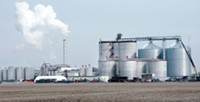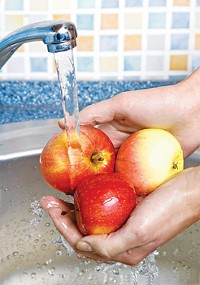Advertisement
Grab your lab coat. Let's get started
Welcome!
Welcome!
Create an account below to get 6 C&EN articles per month, receive newsletters and more - all free.
It seems this is your first time logging in online. Please enter the following information to continue.
As an ACS member you automatically get access to this site. All we need is few more details to create your reading experience.
Not you? Sign in with a different account.
Not you? Sign in with a different account.
ERROR 1
ERROR 1
ERROR 2
ERROR 2
ERROR 2
ERROR 2
ERROR 2
Password and Confirm password must match.
If you have an ACS member number, please enter it here so we can link this account to your membership. (optional)
ERROR 2
ACS values your privacy. By submitting your information, you are gaining access to C&EN and subscribing to our weekly newsletter. We use the information you provide to make your reading experience better, and we will never sell your data to third party members.
Environment
Newscripts
Nanofertilizers, Pee For Your Plants
by Kenneth Moore
March 1, 2010
| A version of this story appeared in
Volume 88, Issue 9

For hardcore gardeners, the summer's bounty starts in midwinter. Many folks, such as this Newscripts writer, already have little tomato and pepper seedlings unfolding their leaves on a bright windowsill, waiting for the soil outside to be warm enough to grow in. The soil, especially that of intensely cultivated commercial farms, often needs a little help to provide the nutrients plants need to grow—and that's where fertilizers come in.
Fertilizers promote plant growth primarily by providing boosts of the much-needed macronutrients nitrogen, phosphorus, and potassium to the plant, as well as other nutrients. But plants don't get the chance to use more than half of the nutrients in fertilizer because the compounds escape via leaching, for example. But for the tech-savvy farmer or gardener, NANO-FERTILIZERS could soon offer a solution to the nutrient-loss problem.
"The innovation level in fertilizers plateaued in the '70s," says Maria C. DeRosa, a chemist at Carleton University, in Ottawa. But her team is now giving the field a push. DeRosa and coworkers at Carleton and Agriculture & Agri-Food Canada, the country's department of agriculture, are working on "designer" nanofertilizers that release nutrients as plants need them. "I think of fertilizer delivery like drug delivery—the soil is almost more complex than the human body," DeRosa says. But in a letter urging effort to develop more advanced agriproducts, the team notes that nanotechnology is being underutilized for fertilizer development (Nat. Nanotechnol. 2010, 5, 91). For instance, DeRosa says, about 3% of pharmaceutical patents from 1998 to 2008 involve nanotechnologies versus less than 1% of fertilizer patents over the same period.
The team is identifying signal compounds released from the roots of food crops and analyzing the data to determine what the plants are saying they need. Then, the team plans to develop functional nanoscale films that, when applied, can respond to these plant signals. This would allow the nutrients the plant is asking for to be released to the plant instead of being washed away and causing environmental damage. "Fertilizers aren't the problem," DeRosa says. "It's when the fertilizer ends up where it's not meant to be that's the problem."
If nanotechnology in your backyard garden makes you a bit leery, you can go the more natural route and use your own URINE AS FERTILIZER to grow vegetables. Researchers at the University of Kuopio, in Finland, have found that human urine and wood ash used as fertilizer increase the production of red beets, Beta vulgaris, over production of those grown with the usual mineral fertilizers (J. Agric. Food Chem. 2010, 58, 2034).
Collecting the urine from residential "eco-toilets," which separate solid and liquid human excretions, the team found that beets dosed with urine (high in nitrogen, phosphorus, and potassium) and both urine and birch wood ash (high in phosphorus, potassium, and other nutrients) had 10% and 27% more biomass, respectively, than beets grown with mineral fertilizer. The results show that in areas where farmers can't afford pricy, technologically advanced fertilizers, wood ash and urine can act as an effective alternative.
The group tested the crops and found that the microbial quality, nutritional value, and taste of urine- and urine/ash-grown beets were on par with those of mineral-fertilizer-grown beets.
The researchers do warn, however, that "it is always important to spread the urine fertilizer around the plants and avoid applying it directly onto any parts of plants." Although urine is generally free of problematic microbial populations, it's better to be safe than sorry.





Join the conversation
Contact the reporter
Submit a Letter to the Editor for publication
Engage with us on Twitter